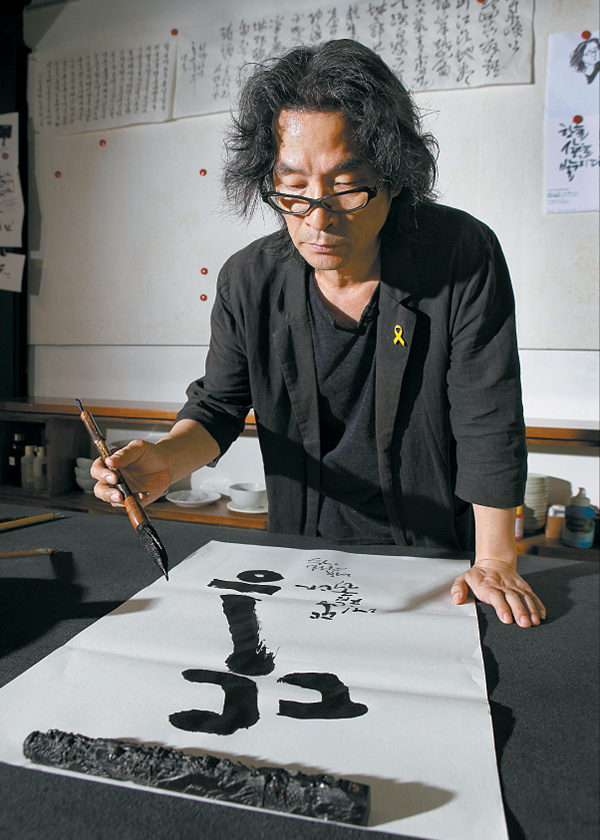A calligrapher’s vision to reinvent hangul
There are many ways to describe calligrapher Kang Byung-in, such as a pioneer of calligraphy or poet of handwriting. The Kang Byung-in Calligraphy Studio Sooltong in Jongno District, central Seoul, is where hangul, the Korean alphabet, blooms like a flower. The reason Kang relocated his studio from the Hongik University area to the area near Seocheon, next to Mt. Inwang, in 2015 is because this is the birthplace of King Sejong the Great (1397-1450), who ordered the creation of the Korean alphabet. For a person who lives, breathes and dreams hangul, what better place to live that dream?
For a long time, Kang talked about King Sejong and hangul. He said that since he makes his living through writing, he feels forever indebted to King Sejong. In the Haerye Edition of the Hunminjeongeum — Haerye refers to the annotations of the Jiphyeonjeon scholars, which were missing from previously known editions — it is written that Korean is different from Chinese characters, or hanja. When Steve Jobs was promoting his company, his key words were “Think Different.” When King Sejong was making hangul, he said that he put his creative mind into action.
King Sejong created something that is completely new instead of copying from someone else. So, Kang asks himself certain questions. As a hangul calligrapher, he wonders if he is maintaining King Sejong’s creative spirit, or if he is only decorating hangul in a fancy way. He wonders if he has fully comprehended King Sejong’s philosophy.
Kang first started seoye, or Korean calligraphy, when he was in sixth grade in elementary school. He liked brushes and the scent of an ink stick. He became acquainted with his spirit mentor Kim Jeong-hee (1786-1856) from a textbook in middle school. After seeing him in the book, he started to dream about becoming a great calligrapher. He came up with a pen-name “Yeongmuk,” which means to live life forever with an ink stick. However, this road was not easy. There were no places where he could learn calligraphy. He knew no calligraphers. It was through self-education he learned how to write. He said that he was happiest when he was holding his brush. After the death of his parents, he went through financial difficulties, but he always had his brush and ink stick by his side.
After majoring in visual arts in college and living as a designer for over ten years, all he had to show for himself was a bad credit rating. After leading a rough life, the chance finally came to study calligraphy.
As a calligrapher who is broadening the scope of the art, which incorporates design and writing, one thing Kang highlights is the spirit of creating something new by following examples from the past. Kang says that in order to write well, the writer has to know how to properly handle the brush. He said that there is a style of penmanship that does not change over time. After getting used to handling a brush, it is time to write. Kang says that the best writing has something of the writer’s own, personal story; for instance, phrases written on a piece of paper by a college student to earn extra money. These types of writing contain a sense of both urgency and desperation. Kang says that these are the most beautiful, as they bring personal stories to the writing.
Kang is searching for hangul’s diversity and beauty. Like a small seed that shoots through the soil in a sprout and finally blossoms, Kang wants to make hangul blossom like a flower.
 A calligrapher’s vision to reinvent hangul
A calligrapher’s vision to reinvent hangulSource: koreajoongangdaily.joins.com
Calligraphy is the flower of a man′ s soul.



